Home>Interior Design>How To Pull A Room Together To Create A Harmonious Space
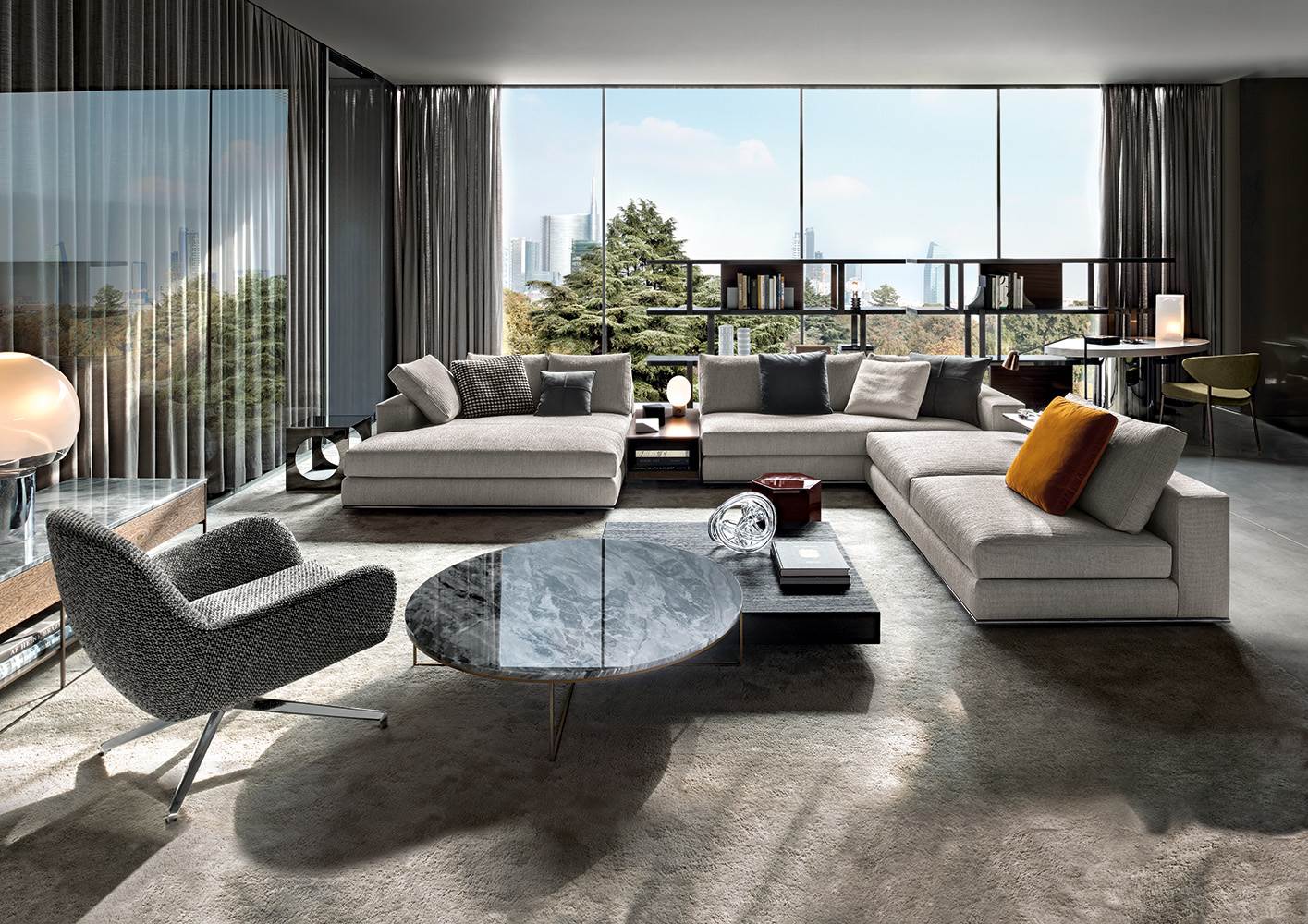

Interior Design
How To Pull A Room Together To Create A Harmonious Space
Modified: February 24, 2024
Learn the art of interior design and discover how to effortlessly bring a room together to create a harmonious and stylish space that reflects your unique personality.
(Many of the links in this article redirect to a specific reviewed product. Your purchase of these products through affiliate links helps to generate commission for Storables.com, at no extra cost. Learn more)
Introduction
Welcome to the world of interior design, where creativity and functionality come together to transform any space into a harmonious sanctuary. Designing a room that feels balanced, inviting, and visually appealing can have a profound impact on our well-being and overall quality of life. But how do we achieve this harmonious balance?
In this article, we will explore the key elements and strategies that can help you pull a room together and create a harmonious space that reflects your individual style and personality. From choosing a color palette to organizing and decluttering, these tips will guide you in the process of transforming a room into a truly cohesive and beautiful environment. So let’s dive in!
Subheading: Choosing a Color Palette
Length: 100-150 words
One of the fundamental elements of interior design is the color palette. Selecting the right colors for a room can set the tone and mood, while also establishing a cohesive look and feel. When choosing a color palette, consider the purpose of the room and the emotions you want it to evoke. For example, cool, serene colors like blues and greens can create a calming atmosphere in a bedroom, while warm, vibrant hues like reds and oranges can energize a living room.
It’s important to remember that color can greatly impact the perceived size and dimensions of a space. Lighter colors tend to make a room feel more spacious, while darker shades can create a cozy and intimate atmosphere. To create a harmonious color scheme, choose a main color and then select complementary or analogous shades to add depth and visual interest. Consider using different shades and tones within the same color family to create a layered and cohesive look.
Subheading: Selecting the Right Furniture
Length: 100-150 words
The furniture you choose for a room plays a crucial role in establishing its overall style and functionality. When selecting furniture, consider the size and scale of the space, as well as the specific needs and preferences of the occupants. Balance is key when it comes to furniture placement – aim for a mix of large and small pieces, and avoid overcrowding the room.
Additionally, consider the style and material of the furniture to ensure it complements the overall aesthetic of the room. Mixing different materials, such as wood, metal, and fabric, can add visual interest and texture. Don’t be afraid to experiment with different patterns and textures in upholstery and pillows to create depth and visual appeal. And remember, comfort should always be a priority – choose furniture that not only looks great but also feels comfortable and inviting.
Key Takeaways:
- Create a harmonious space by balancing color, furniture, lighting, and personal touches. Incorporate natural elements, maintain clear surfaces, and trust your intuition to achieve a visually appealing and inviting environment.
- Achieve harmony through organization, decluttering, and mindful design choices. Embrace minimalism, utilize storage solutions, and regularly reassess and maintain the space to create a serene and balanced atmosphere.
Read more: What Is Harmony In Interior Design
Choosing a Color Palette
One of the most important decisions you will make when designing a room is choosing the color palette. The colors you select will set the mood, establish the overall aesthetic, and create a sense of harmony in the space. The right color palette can completely transform a room, making it feel cohesive, inviting, and visually appealing. Here are some tips to help you select the perfect color palette for your space:
Consider the Purpose of the Room: Think about how you want the room to feel and what its primary function will be. Do you want it to be a tranquil oasis for relaxation, or a vibrant and energizing space for socializing? The emotions you want to evoke will guide your color choices.
Start with a Base Color: Begin by choosing a base color that will serve as the foundation for the room. This color can be applied to the walls, large furniture pieces, or flooring. It should be a shade that you truly love and feel comfortable being surrounded by.
Explore Color Psychology: Colors have a profound impact on our emotions and can influence our mood. For example, cool colors like blues and greens are known for creating a calming and serene environment, which makes them ideal for bedrooms or home offices. On the other hand, warm and vibrant colors like oranges and reds can stimulate energy and social interaction, making them suitable for living rooms or dining areas.
Consider the Natural Light: Natural light can drastically alter the way colors appear in a room. Take note of the direction and intensity of the sunlight in the space throughout the day before finalizing your color choices. Be mindful that cooler colors may appear bluer in north-facing rooms, while warmer colors may be intensified in south-facing rooms.
Choose Complementary or Analogous Colors: To create a cohesive and harmonious look, select colors that either complement or are close to each other on the color wheel. Complementary colors, such as blue and orange or purple and yellow, create a vibrant and visually stimulating contrast. Analogous colors, like various shades of blue or green, create a harmonious and soothing effect.
Consider the 60/30/10 Rule: This rule can serve as a helpful guide in balancing the colors within a space. Allocate 60% of the room to the dominant color, 30% to a secondary color, and 10% for the accent color. This ensures a visually balanced and visually appealing color distribution.
Test Samples: It’s always a good idea to test paint samples or fabric swatches before committing to a specific color. Colors can appear different under various lighting conditions, so it’s important to see how they look in the actual space before making a decision.
Remember, the color palette of a room should reflect your personal style and preferences. Trust your instincts and choose colors that resonate with you. By carefully selecting and harmonizing your color choices, you will create a room that is visually stunning and emotionally captivating.
Selecting the Right Furniture
When it comes to designing a harmonious space, choosing the right furniture is essential. Furniture not only provides functionality but also plays a pivotal role in setting the style and overall aesthetic of the room. Here are some key considerations to keep in mind when selecting furniture for your space:
Scale and Proportion: The size and scale of furniture pieces should be in proportion to the size of the room. Oversized furniture in a small room can make the space feel cramped, while petite furniture in a large room might look insignificant. Take measurements of your room and plan accordingly to ensure your furniture fits comfortably and does not overpower the space.
Functionality: Consider the purpose of the room and the intended use of the furniture. For example, if you’re designing a living room, you’ll need comfortable seating options such as sofas and chairs. If it’s a home office, a functional desk and ergonomic chair are paramount. Choose furniture that meets your specific needs and enhances the functionality of the space.
Style and Aesthetic: Furniture should complement the overall style and aesthetic of the room. Determine the desired style, whether it’s modern, traditional, rustic, or eclectic, and select furniture pieces that align with that style. The materials, finishes, and details of the furniture should harmonize with the overall design concept.
Mixing and Matching: Avoid purchasing furniture sets that are too matching as they can make the space appear cookie-cutter and lack personality. Instead, mix and match different furniture pieces that complement each other and create visual interest. Experiment with different styles, materials, and textures to add depth to your design.
Comfort: In addition to style, consider the comfort of the furniture. You want to create a space that is not only visually appealing but also comfortable and inviting. Test the comfort level of sofas, chairs, and mattresses before making a purchase. Pay attention to factors such as cushioning, seat depth, and back support.
Quality and Durability: Investing in high-quality furniture is important for both its longevity and overall aesthetic appeal. Well-made furniture will withstand daily use and maintain its visual appeal over time. Consider the materials, construction, and finishes to ensure you are choosing pieces that are built to last.
Flexibility: Opt for furniture that offers flexibility and versatility. Look for pieces that can serve multiple functions or be easily moved around to adapt to different layouts or design preferences. This will give you the freedom to reconfigure the space as needed without having to replace furniture.
Consider Storage: If you’re working with limited space, consider furniture pieces that offer built-in storage solutions. This will help keep the room organized and decluttered, contributing to a sense of harmony and order.
Personal Touch: Lastly, don’t forget to infuse your own personal touch into the furniture selection process. Look for unique pieces or incorporate sentimental items that hold special meaning to you. This will add an extra layer of personality and make the space even more harmonious.
Remember, selecting the right furniture is a key ingredient in creating a harmonious space. By considering factors such as scale, functionality, style, comfort, and quality, you can choose furniture pieces that not only enhance the aesthetic but also contribute to the overall harmony and balance of the room.
Creating a Focal Point
Every well-designed room needs a focal point – a visually striking element that draws the eye and anchors the space. A focal point is essential for creating visual interest, guiding the overall design, and adding a sense of harmony to the room. Here are some tips on how to create a strong focal point:
Highlight Architectural Features: If your room has any standout architectural features, such as a fireplace, large windows, or a unique ceiling design, emphasize and enhance them. Use lighting, color, and furniture arrangement to draw attention to these elements and make them the focal point of the room.
Wall Art: Hanging a large, eye-catching piece of art on a prominent wall can instantly create a focal point. Choose a piece that reflects your style and makes a statement. Consider the scale and color of the artwork in relation to the room to ensure it stands out and harmonizes with the overall design.
Statement Furniture: Incorporating a bold piece of furniture can serve as a focal point in the room. This could be a unique sofa, a statement chair, or an intricately designed coffee table. Choose a piece that stands out from the rest of the furniture and complements the overall style of the room.
Feature Wall: Painting or wallpapering one wall in a different color or pattern can create a visually striking feature wall that becomes the focal point of the room. Choose a color or pattern that complements the rest of the room while adding a touch of drama and interest.
Natural Elements: Bringing nature indoors can also create a captivating focal point. Consider incorporating a living wall, a large indoor plant, or a stunning floral arrangement as a focal point in the room. The vibrant colors and textures of natural elements can add depth and visual interest to the space.
Lighting: Thoughtfully designed lighting can help create a focal point. Using a chandelier, pendant lights, or a unique floor lamp can draw attention to a specific area of the room. Experiment with different lighting fixtures and placement to achieve the desired effect.
Contrast: Creating contrast in the room can also help establish a focal point. Contrast can be achieved through color, texture, or pattern. For example, placing a dark-colored piece of furniture against a light-colored wall or incorporating a textured wallpaper behind a smooth, minimalist furniture piece can create a visually striking focal point.
Grouping: Arranging certain elements together can also create a focal point. For example, grouping a collection of art pieces or decorative items on a wall or clustering furniture around a specific area can draw attention and establish a focal point within the room.
Remember, a focal point should be visually captivating, but it should also reflect your personal style and complement the overall design of the space. By creating a strong focal point, you can enhance the visual appeal of the room and create a sense of harmony and balance.
Balancing Proportions
When designing a room, achieving balance in proportions is key to creating a harmonious and visually pleasing space. Balancing proportions involves creating a sense of equilibrium and symmetry among the various elements within the room. Here are some tips on how to balance proportions effectively:
Furniture Placement: Proper furniture placement is crucial in achieving balanced proportions. Avoid crowding furniture against one wall or clustering all the furniture in one area. Instead, distribute furniture evenly throughout the room while considering the flow and functionality of the space. Leave enough negative space to create an open and spacious feel.
Scale and Size: Ensure that the scale and size of furniture and decor items are appropriate for the room. Oversized furniture in a small space can make the room feel cramped, while undersized furniture in a large room may appear disproportionate. Pay attention to the height, width, and depth of each piece to ensure they harmonize with the overall dimensions of the room.
Visual Weight: Consider the visual weight of each element within the room. Visual weight refers to how much attention an item attracts visually. Balance heavy or visually dominant pieces with lighter or more delicate elements. For example, if you have a large, statement artwork on one wall, balance it out by incorporating smaller, complementary pieces on other walls.
Symmetry and Asymmetry: Both symmetry and asymmetry can be used effectively to achieve balance. Symmetry involves creating an even distribution of identical or similar elements, such as placing two identical chairs on either side of a fireplace. Asymmetry, on the other hand, involves creating balance using different but complementary elements, such as pairing a large sofa with two different-sized side tables.
Color Balance: Pay attention to color balance within the room. Distribute colors evenly to avoid visual imbalances. If you have a bold or vibrant color on one side of the room, balance it out with a touch of the same color or a complementary color in another area. This will create a sense of cohesion and balance throughout the space.
Texture and Pattern: Incorporating texture and pattern can add visual interest and balance within a room. Mix different textures and patterns throughout the space to create depth and a sense of equilibrium. Pair smooth, sleek surfaces with textured and patterned fabrics or accessories to create a pleasing balance.
Vertical and Horizontal Lines: Consider the vertical and horizontal lines within the room. Incorporating both vertical and horizontal elements can create visual balance. For example, a tall bookshelf can be balanced with a horizontal line created by a console table or a low-profile sofa.
Negative Space: Negative space, also known as empty or white space, is crucial in achieving balance and preventing overcrowding. Allow for enough breathing room between furniture and decor items to create a sense of openness and balance. Negative space also provides visual relief and highlights the importance of the elements within the room.
Remember, achieving balance in proportions is about creating a sense of harmony and equilibrium within the room. By considering furniture placement, scale, visual weight, color balance, texture, and negative space, you can create a space that feels visually pleasing, cohesive, and balanced.
Use a consistent color scheme and incorporate elements of balance and symmetry in the room. This can be achieved through matching furniture, coordinating accessories, and strategic placement of decor.
Read more: How To Measure For Cabinet Pulls
Utilizing Lighting Effectively
Lighting plays a crucial role in setting the mood, enhancing the ambiance, and highlighting the key features of a room. By utilizing lighting effectively, you can create a harmonious and inviting space. Here are some tips to help you maximize the potential of lighting in your design:
Natural Light: Take advantage of natural light as much as possible. It is not only energy-efficient but also provides a sense of warmth and connection to the outdoors. Arrange furniture and window treatments to allow natural light to enter the room. Consider the direction and intensity of sunlight throughout the day and how it interacts with the space.
Layered Lighting: Use a combination of lighting types to create a layered effect. Ambient lighting provides overall illumination and is typically provided by overhead fixtures or recessed lighting. Task lighting is focused lighting that serves a specific purpose, such as reading or cooking, and can be achieved with desk lamps or under-cabinet lights. Accent lighting is used to highlight specific features or objects in the room, such as artwork or architectural details, and can be achieved with track lighting or picture lights. By combining these three types of lighting, you can create depth, functionality, and visual interest in the room.
Dimmers: Install dimmer switches to have control over the intensity of light in the room. This allows you to adjust the lighting to match the desired mood or activity. Dimmers also provide flexibility, enabling you to create a soft, ambient atmosphere or a bright, energetic setting, depending on your needs and preferences.
Lighting Fixtures: Choose lighting fixtures that complement the style and aesthetic of the room. Whether it’s pendant lights, chandeliers, wall sconces, or floor lamps, select fixtures that enhance the overall design concept. Consider the size, shape, and materials of the fixtures, as well as the quality and color of the light they emit. Lighting fixtures can serve as decorative elements themselves while providing functional illumination.
Lighting Zones: Divide the room into different lighting zones to cater to different activities or moods. For example, create a well-lit area for reading or working, a soft and cozy area for relaxation, and a brighter area for socializing or entertaining. Using different lighting sources and intensities in each zone will help define the purpose and atmosphere of each space within the room.
Highlighting Features: Use lighting strategically to draw attention to key features in the room. This can include architectural details, artworks, or focal points such as a fireplace or an accent wall. By using spotlights, track lighting, or directional lamps, you can create a focal point and add drama to the space.
Consider Color Temperature: Be mindful of the color temperature, expressed in Kelvins (K), of the lightbulbs you choose. Cooler temperatures (higher Kelvins) produce a bluish-white light, while warmer temperatures (lower Kelvins) produce a yellowish-white or amber light. Consider the mood and ambiance you want to achieve in the room and select lightbulbs with the appropriate color temperature accordingly.
Smart Lighting: Consider implementing smart lighting systems that allow you to control the lights using your smartphone or voice commands. These systems provide convenience and flexibility in adjusting the lighting according to your preferences, as well as scheduling automated lighting scenes for different times of the day or specific events.
Remember, lighting is a powerful tool in interior design. By utilizing natural light, layering different types of lighting, using dimmers, choosing appropriate fixtures, creating lighting zones, highlighting features, considering color temperature, and implementing smart lighting, you can create a harmonious and visually appealing space that enhances the overall atmosphere and functionality.
Incorporating Texture and Patterns
Texture and patterns are essential elements in interior design that can add depth, visual interest, and a sense of harmony to a room. By incorporating different textures and patterns, you can create a dynamic and visually appealing space that reflects your style and personality. Here are some tips on how to effectively incorporate texture and patterns in your design:
Varied Textures: Mix and match different textures to create visual contrast and tactile interest. Consider incorporating materials such as wood, leather, metal, glass, and fabric to add depth and dimension to the room. Play with smooth surfaces against rough textures, or soft materials against hard surfaces. For example, pair a plush velvet sofa with a rustic wooden coffee table or combine a sleek glass vase with a woven wool rug.
Layering: Layering textures can create a cozy and inviting atmosphere. Use a variety of textiles, such as cushions, throws, curtains, and rugs, to add layers of texture to the room. Experiment with different fabrics like linen, silk, wool, or faux fur to achieve the desired effect. Layering also provides an opportunity to incorporate patterns and colors that complement each other.
Patterns and Prints: Incorporating patterns can add visual interest and create a focal point in a room. Start with a patterned piece, such as a bold wallpaper, an area rug, or a patterned accent chair, and build from there. Consider the scale and proportion of the patterns to ensure they harmonize with the size of the room and other elements within it. Mixing different patterns, such as stripes, florals, and geometrics, can create a vibrant and eclectic look, but be sure to balance these patterns with solid colors and neutral elements.
Color Palette: Consider the color palette when incorporating texture and patterns. Choose textures and patterns that complement the colors in the room. For a cohesive look, incorporate colors that are already present in the space or choose complementary colors. If you prefer a more eclectic style, experiment with contrasting colors that create visual interest. Use the 60/30/10 rule to ensure a balanced distribution of colors, with 60% as the dominant color, 30% as a secondary color, and 10% as an accent color.
Balance: Achieving balance is crucial when incorporating texture and patterns. You want to create a visually pleasing composition without overwhelming the space. If you have a heavily patterned piece, balance it out with solid colors or more subtle textures. Similarly, if you have a space with minimal texture, consider adding a textured rug, woven baskets, or textured wallpaper to introduce depth and visual interest.
Statement Pieces: Incorporate one or two statement pieces with unique textures or bold patterns to create a focal point in the room. This could be a textured accent wall, a patterned statement chair, or a textured ceiling. Make sure these pieces complement the overall style and color scheme of the room while creating a standout feature that draws attention.
Texture in Accessories: Don’t overlook the power of accessories in adding texture to a room. Incorporate textured elements through decorative objects such as textured vases, handwoven baskets, or sculptural pieces. These small details can make a big impact in creating a visually appealing and harmonious space.
Contrast: Using contrasting textures and patterns can create visual interest and a sense of balance. Pair smooth and shiny surfaces with rough and matte textures, or mix intricate patterns with simple and clean lines. The contrast between different textures and patterns can create a dynamic and visually captivating space.
Remember, incorporating texture and patterns adds depth, visual interest, and a sense of harmony to a room. By considering varied textures, layering, patterns and prints, color palette, balance, statement pieces, texture in accessories, contrast, and your personal style, you can create a visually appealing and inviting space that reflects your unique taste and personality.
Adding Art and Decorative Accents
Art and decorative accents are the finishing touches that can elevate a room from ordinary to extraordinary. They add personality, character, and a sense of individual style to a space. Whether it’s paintings, sculptures, or decorative objects, here are some tips on how to effectively add art and decorative accents to your interior design:
Choose Art That Speaks to You: When selecting artwork, choose pieces that resonate with you personally. Art should evoke emotions and reflect your taste and interests. Look for pieces that you connect with, whether it’s a painting, a photograph, or even a textile art piece. Don’t be afraid to explore different styles, mediums, and artists to find art that truly speaks to you.
Consider Scale and Proportion: Consider the scale and proportions of the art pieces in relation to the size of the room and the surrounding furniture. A large, bold artwork can make a statement on a spacious wall, while a smaller piece may be better suited for a gallery wall or a collection of artworks. Ensure that the art is appropriately sized and proportioned to enhance the overall balance of the room.
Create a Focal Point: Use artwork as a focal point to draw attention and anchor the room. Select one or a few pieces that stand out and make a statement. This could be a large painting above a fireplace, a gallery wall on a feature wall, or a sculpture placed strategically to catch the eye. The focal point can be a reflection of your personal style and a conversation starter for your guests.
Mix Different Art Mediums: Experiment with different art mediums to add variety and visual interest. Incorporate a mix of paintings, photographs, prints, ceramics, or textiles. Mixing different mediums adds layers to the room and creates an eclectic and curated look. Embrace the opportunity to showcase your eclectic taste and support artists from different disciplines.
Consider the Color Palette: Consider the color palette of the room when selecting art pieces. Choose art that complements the existing color scheme or introduces new colors to create visual interest. Art can tie together different elements within the room and enhance the overall color harmony. Be mindful of the emotions and atmosphere that different colors evoke and select art that aligns with the intended mood of the space.
Showcase Personal Collections: Displaying personal collections and mementos can add a personal touch and make your space truly unique. Whether it’s antique books, vintage records, or travel souvenirs, showcasing these items as decorative accents adds a sense of history and personality to the room. Use shelves, display cabinets, or wall-mounted frames to incorporate these personal collections as part of your design.
Compose a Gallery Wall: Gallery walls are a popular way to showcase multiple pieces of art in a cohesive and visually pleasing way. Create a gallery wall by grouping together a collection of artworks or photographs. Select frames and mats that coordinate with the color and style of the room. Experiment with different layouts and arrangements to find a composition that works best for your space.
Layer Decorative Accents: Layering decorative accents can add depth and texture to a room. Place decorative objects such as vases, candles, sculptures, or plants on shelves, coffee tables, or side tables. Mix different heights, shapes, and textures to create visual interest. Add a personal touch by incorporating items that have sentimental value or reflect your hobbies and interests.
Consider Wall Murals or Wallpapers: Wall murals or wallpapers can be a unique way to make a bold statement and incorporate art into your design. Choose designs that reflect your style and create a sense of harmony within the room. Whether you opt for an intricate pattern, a nature-inspired scene, or a minimalist design, wall murals and wallpapers can transform a room and create a stunning backdrop for the rest of your decor.
Lighting for Artwork: Use appropriate lighting to highlight art pieces and decorative accents. Install adjustable spotlights, track lighting, or picture lights to focus attention on specific pieces. Consider the type of lighting that works best for the artwork material and colors. Proper lighting not only accentuates the art but also adds another layer of ambiance to the room.
Remember, art and decorative accents are an opportunity to express yourself, infuse personality, and create a sense of harmony within your space. Embrace your individual style, experiment with different mediums, and curate a collection that reflects your taste and interests. By adding art and decorative accents, you’re not only enhancing the visual appeal of your room but also creating a space that is uniquely yours.
Organizing and Decluttering
Achieving a harmonious and inviting space is not just about the design and decor – it’s also about keeping the room organized and free from clutter. Organizing and decluttering are essential steps in creating a serene and balanced environment. Here are some tips to help you stay organized and declutter your space:
Assess and Sort: Begin by assessing the current state of the room and sorting items into categories. Separate belongings into “keep,” “donate,” and “discard” piles. Be honest with yourself and let go of items that no longer serve a purpose or bring you joy. This process will help you identify which items are essential and which can be removed.
Storage Solutions: Invest in practical storage solutions to keep items organized and out of sight. Utilize shelves, cabinets, baskets, bins, and drawers to store belongings efficiently. Maximize vertical space by utilizing wall-mounted shelves or floor-to-ceiling cabinets. Labeling boxes and containers can also help you locate items easily and maintain order.
Functional Furniture: Choose furniture pieces that have built-in storage options. Opt for ottomans or coffee tables with hidden compartments, bookshelves with drawers, or a bed with underneath storage space. Functional furniture not only helps keep your belongings organized but also saves valuable space in the room.
Declutter Surfaces: Keep surfaces clean and decluttered. Limit the number of items displayed on shelves, tabletops, and countertops. Group together similar items or display a few carefully chosen decorative pieces. Removing unnecessary clutter from surfaces creates a sense of spaciousness and promotes a calm and balanced atmosphere.
Implement Daily Habits: Develop daily habits to maintain organization and prevent clutter from accumulating. Make it a habit to put things back in their designated places after use. Take a few minutes each day to tidy up, clear away items, and reorganize. By incorporating these habits into your routine, you can ensure that your space remains organized and clutter-free.
Digital Decluttering: Don’t forget about decluttering your digital space. Organize files on your computer, delete unnecessary documents and emails, and back up important files. Streamline your desktop and organize digital photos into folders. A well-organized digital space can be just as important as a physical one in maintaining a sense of harmony.
Minimalism: Embrace the principles of minimalism to reduce clutter and create a more serene environment. Consider simplifying your decor and keeping only the essential items. Avoid excessive ornamentation and opt for clean lines and minimalistic designs. Adopting a minimalist approach can create a sense of balance and spaciousness in the room.
Regular Decluttering Sessions: Schedule regular decluttering sessions to periodically reassess your belongings and continue to edit and organize. This can be done on a monthly or seasonal basis, allowing you to maintain a clutter-free and harmonious space. Regular decluttering sessions also prevent items from accumulating and becoming overwhelming.
Donate or Sell Unwanted Items: Consider donating or selling items that you no longer need or use. This not only helps declutter your space but also provides an opportunity for others to benefit from your unwanted items. Donate to local charities or hold a garage sale to give new life to items that are still in good condition.
Embrace a “One In, One Out” Rule: To prevent unnecessary accumulation of clutter, adopt a “one in, one out” rule. For every new item you bring into the room, remove an existing item. This creates a conscious decision-making process and prevents overcrowding of belongings.
Remember, organizing and decluttering are ongoing processes that require mindful decision-making and regular maintenance. By keeping your space organized, decluttered, and free from excess belongings, you can create an environment that promotes a sense of calm, balance, and harmony.
Read more: How To Create A Garden
Final Tips for Creating a Harmonious Space
Creating a harmonious space is about more than just the individual elements of design. It’s about bringing everything together to create a cohesive and balanced environment that feels inviting and visually pleasing. Here are some final tips to help you achieve a harmonious space:
Balance and Symmetry: Strive for balance and symmetry in the room. Equally distribute furniture, art, and decorative elements to create a sense of equilibrium. Symmetry can create a visual calmness and order, while balance ensures that no single element overpowers the space. However, don’t be afraid to incorporate asymmetry for added interest and dynamism.
Flow and Functionality: Consider the flow and functionality of the room. Arrange furniture and decor in a way that promotes ease of movement and accommodates the room’s purpose. Create clear pathways and allow for adequate space to maneuver. Ensure that furniture is arranged to facilitate conversation and interaction while maintaining functionality.
Natural Elements: Incorporate natural elements to create a sense of harmony with the environment. Bring in plants, flowers, or natural materials such as wood or stone. Nature has a soothing effect and adds depth and texture to the space. Even small touches of nature can make a significant difference in creating a harmonious atmosphere.
Sensory Appeal: Engage all the senses to enhance the overall experience in the room. Consider incorporating soft, plush textures for comfort, subtle scents through candles or diffusers for a pleasing aroma, and soothing background music to create a calming ambiance. Pay attention to the tactile, olfactory, and auditory aspects to create a truly harmonious space.
Positive Energy: Infuse positive energy into the room through mindful placement of objects and decor. Incorporate items that hold personal meaning or bring you joy. Surround yourself with things that inspire and uplift you, whether it’s inspirational quotes, artwork, or sentimental treasures. Positive energy contributes to a harmonious and joyful atmosphere.
Maintain Clear Surfaces: Keep surfaces clutter-free to create visual serenity and openness. Clear countertops, tables, and shelving from unnecessary items and strive for minimalism. Use storage solutions to maintain order and keep belongings out of sight. A clear and organized space fosters a calm and harmonious environment.
Harmonious Color Scheme: Create a harmonious color scheme that resonates with you and establishes a cohesive look. Choose colors that complement each other and evoke the desired mood. Use a variety of shades within the same color family to add depth and interest. Consider the impact of color psychology and how different hues can influence emotions and well-being.
Personal Touches: Infuse your personality and personal style into the space. Incorporate elements that reflect your interests, hobbies, and experiences. Display photographs, artworks, or souvenirs that hold sentimental value to create a sense of warmth and individuality. Making the space a reflection of your identity contributes to a truly harmonious environment.
Regular Maintenance: Regularly maintain and update the space to ensure it stays harmonious. Periodically reassess the decor, furniture, and organization to address any changes in preferences or needs. Don’t be afraid to make adjustments or switch things up to keep the space feeling fresh and aligned with your evolving style and lifestyle.
Trust Your Intuition: Lastly, trust your intuition and follow your instincts. Designing a harmonious space is a personal journey, and ultimately, you are the best judge of what feels right for you. Listen to your feelings and make choices that resonate with your own sense of harmony and well-being.
By incorporating these tips and approaches, you can create a harmonious space that not only looks visually appealing but also feels inviting, balanced, and aligned with your personal style and well-being.
Frequently Asked Questions about How To Pull A Room Together To Create A Harmonious Space
Was this page helpful?
At Storables.com, we guarantee accurate and reliable information. Our content, validated by Expert Board Contributors, is crafted following stringent Editorial Policies. We're committed to providing you with well-researched, expert-backed insights for all your informational needs.
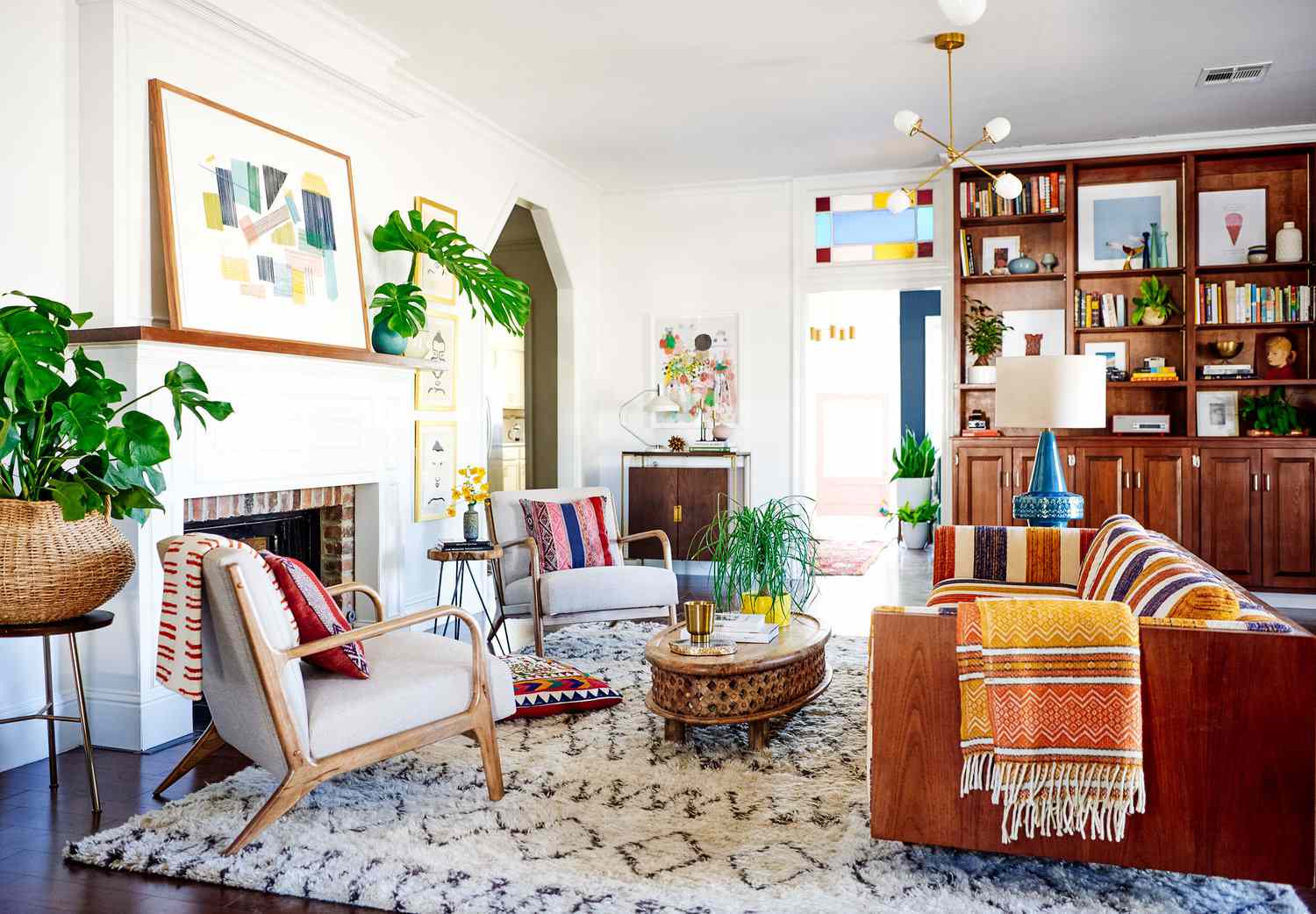
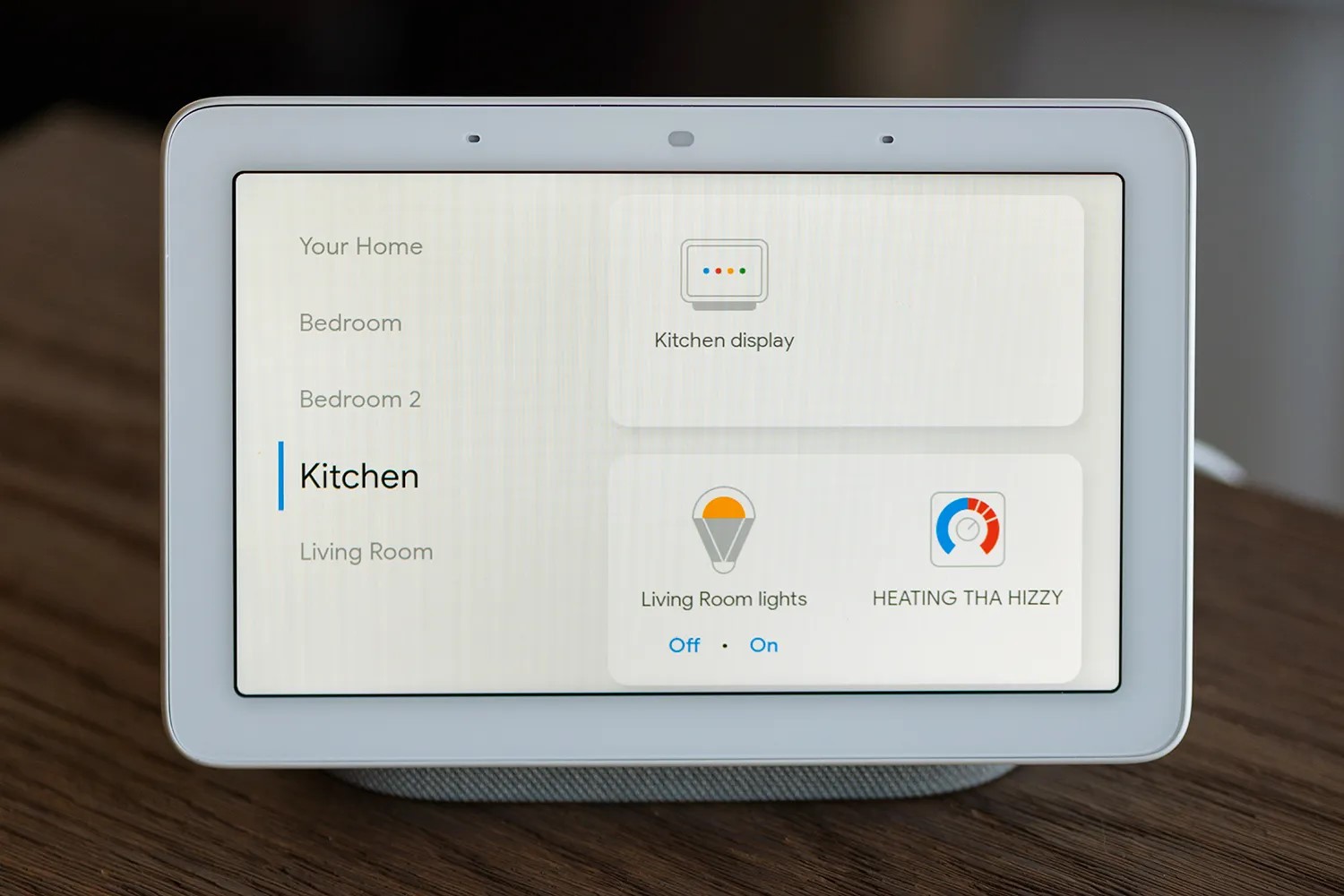

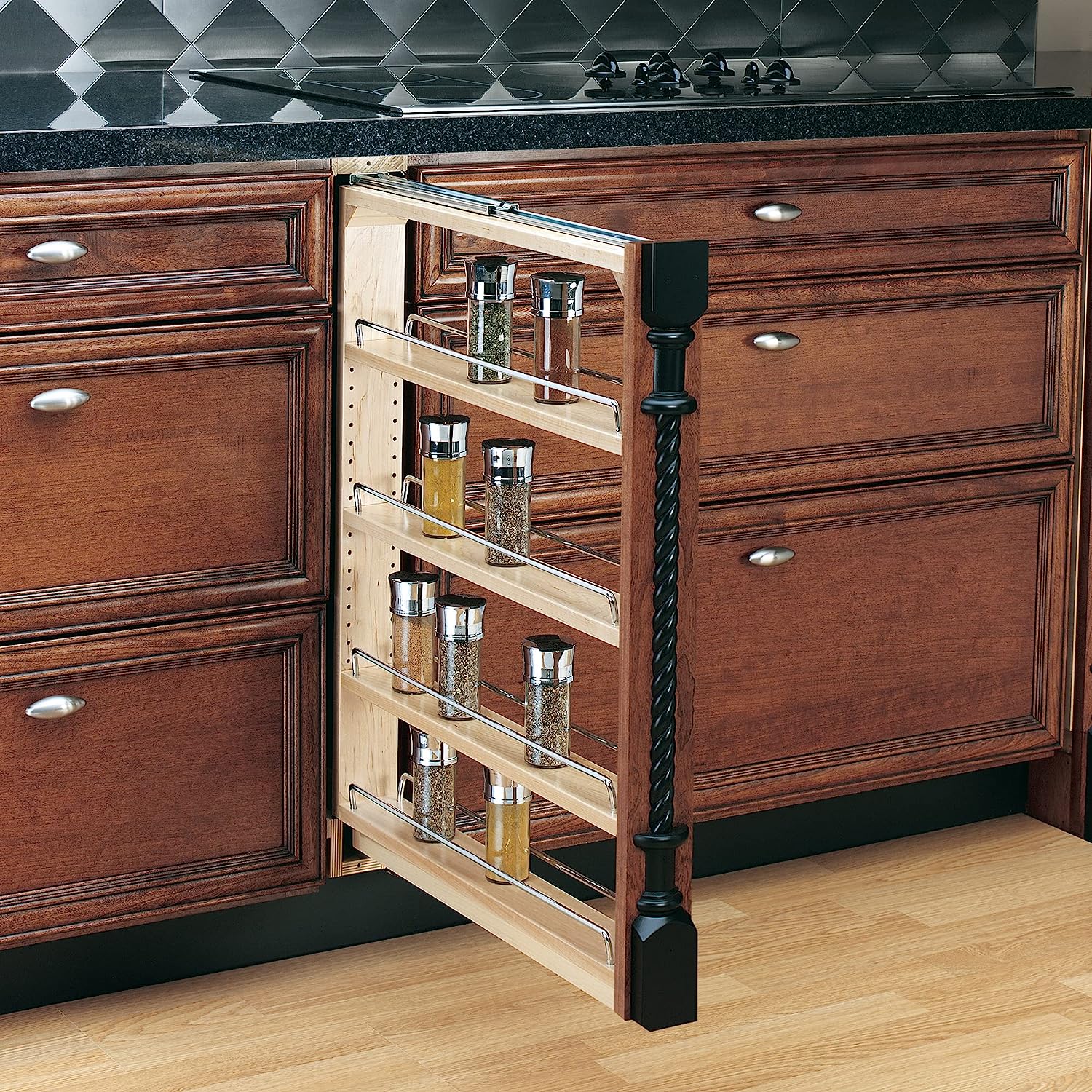
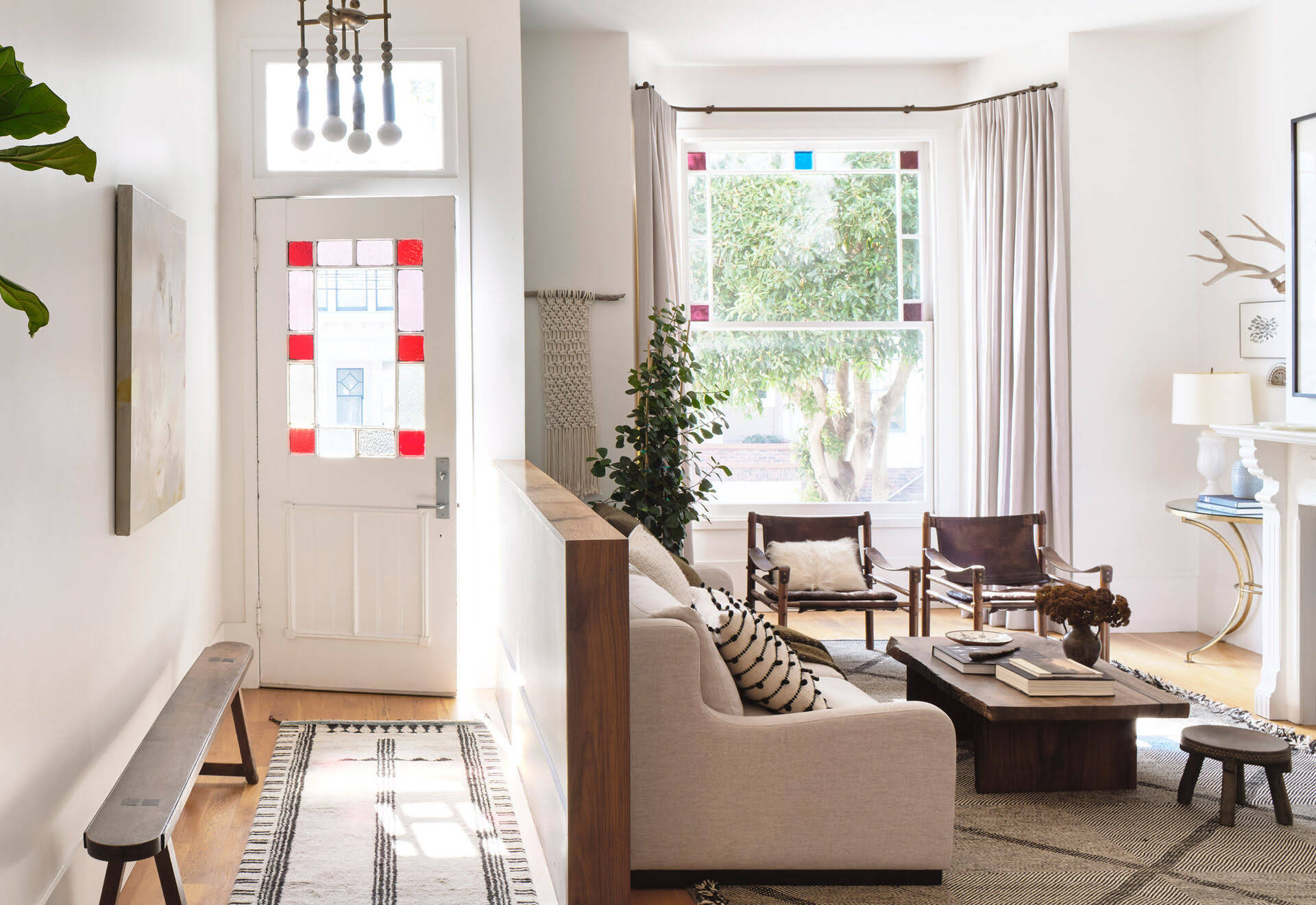
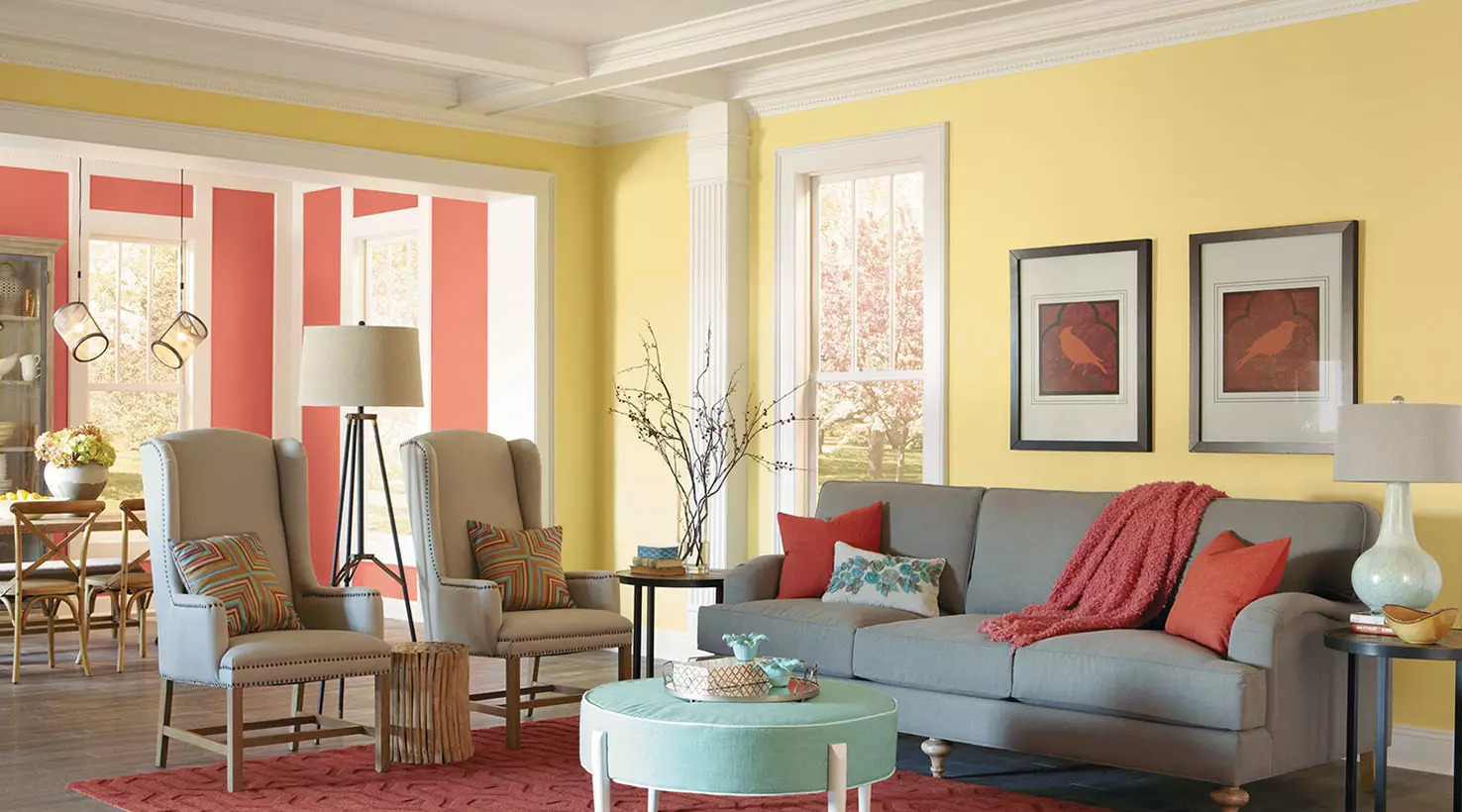

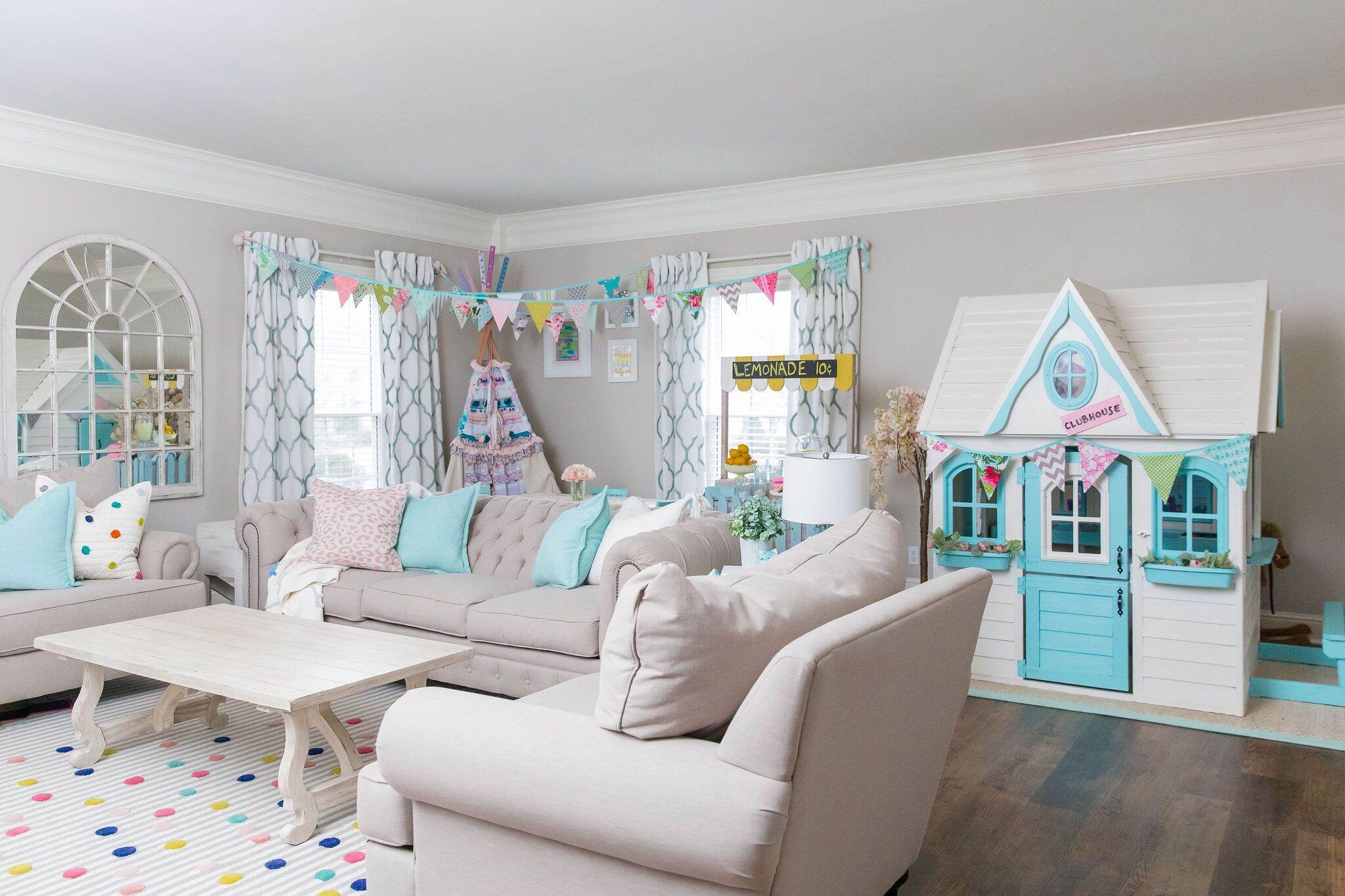
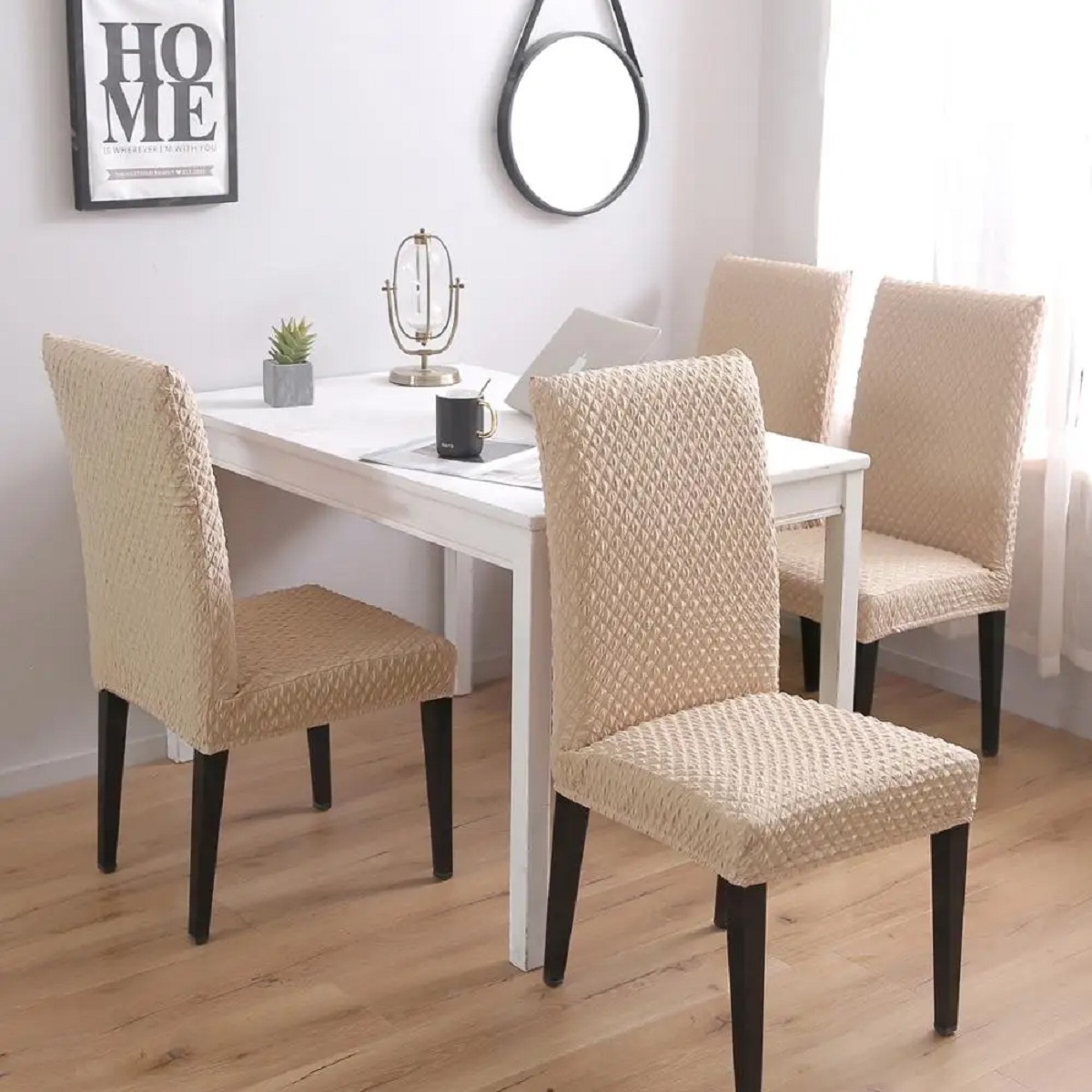
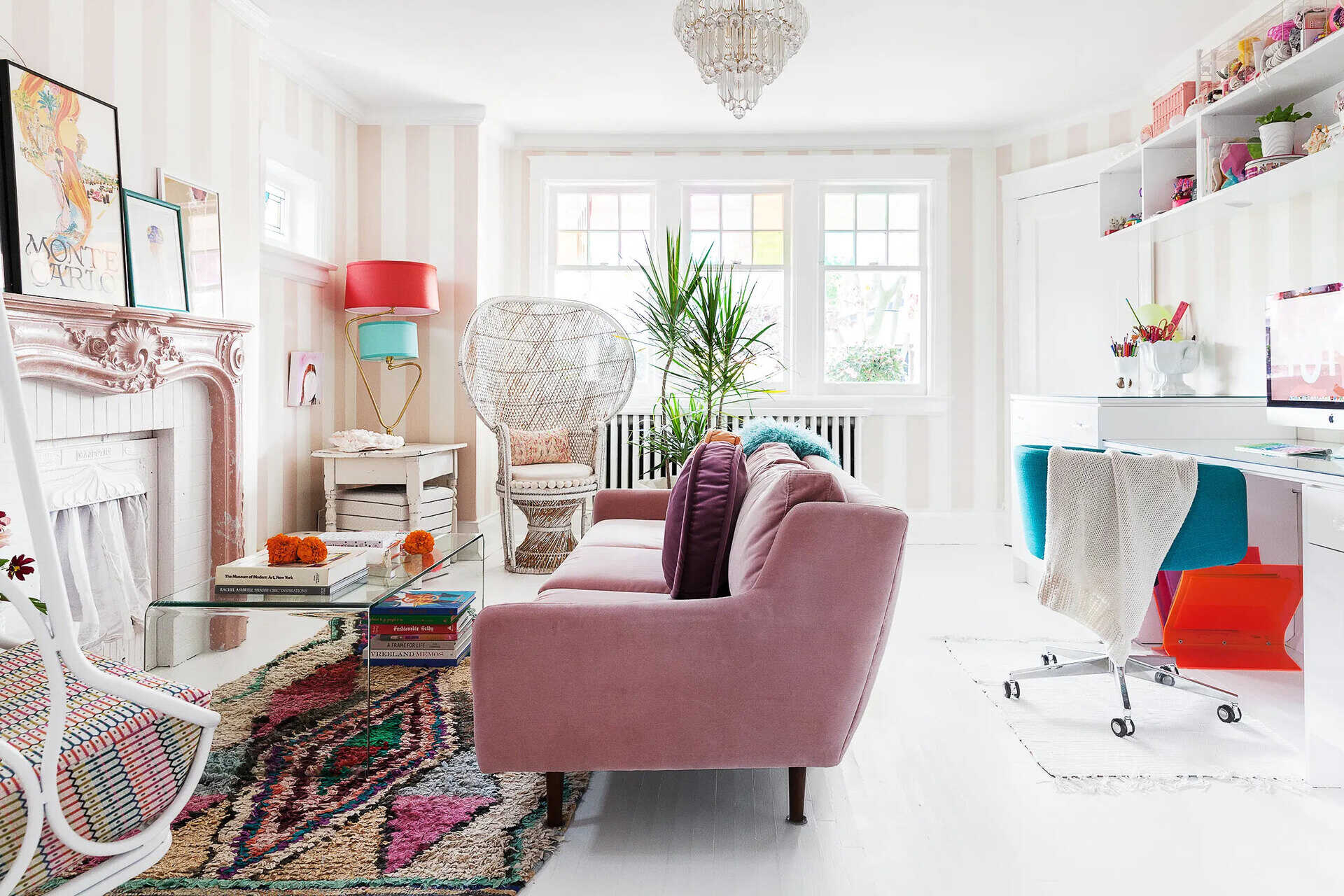




0 thoughts on “How To Pull A Room Together To Create A Harmonious Space”